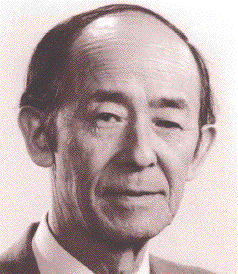Name Komei Abe | Role Composer | |
 | ||
K abe symphony no 1 1957
Kōmei Abe (安部幸明, Abe Kōmei, 1 September 1911 – 28 December 2006) was a neo-classical Japanese composer who specialized in string quartets. He performed both as cellist and clarinetist.
Contents
- K abe symphony no 1 1957
- K mei abe sinfonietta 1964
- Orchestral works
- Theatre
- Chamber music
- Music for children
- References

He was born in Hiroshima into a military family, and became interested in the violin during a stay in Tokyo. From 1929 he attended Tokyo Music School, where he studied cello under Heinrich Werkmeister (1883-1936), who had moved to Japan in 1907, and composition under the conductor Klaus Pringsheim (a pupil of Gustav Mahler) who had been invited to Tokyo in 1931 to become professor of music. From 1937 he studied with Joseph Rosenstock. In 1942, he had his first success with the premiere of the Cello Concerto, which he had completed five years before. However, in 1944 he was conscripted into the Navy. After the war he became involved in broadcasting, and co-founded the five-member Chijinkai (Earth-Human Association), which gave six concerts between 1949 and 1955. Between 1948 and 1954 he was the director of the Imperial orchestra. Although this orchestra usually performed Western music, many of its members had played traditional court music, and thus Abe learnt in detail about the gagaku style.
His compositions include two symphonies, fifteen string quartets, and concertos for piano and cello.
K mei abe sinfonietta 1964
Orchestral works
- Allegro con brio
- Adagietto
- Vivace assai
- Andante sostenuto
- Adagietto
- Allegro
- Allegro con brio
- Moderato
- Scherzo: Andante - Presto
- Finale: Allegro assai
